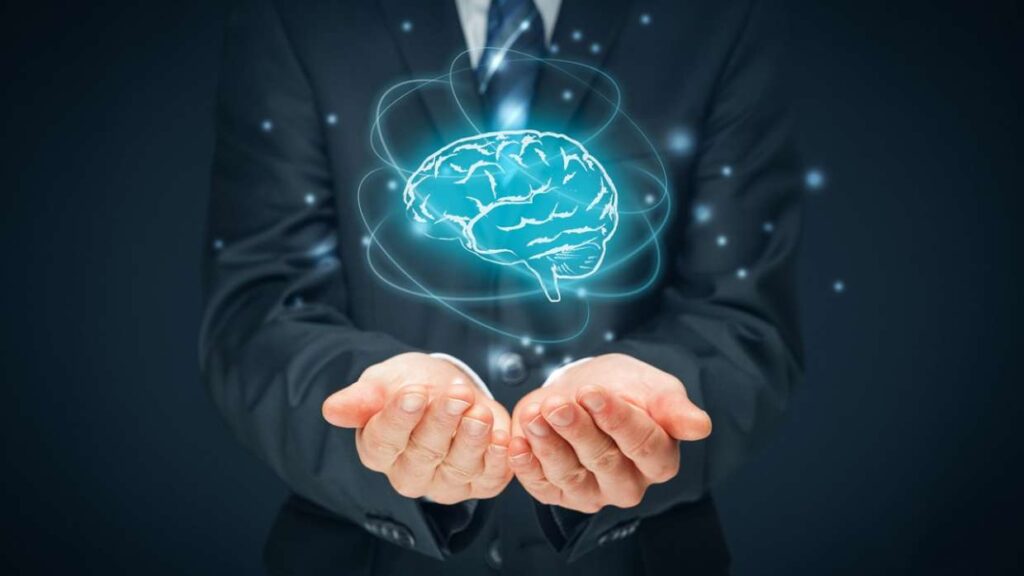As Artificial Intelligence (AI) enters the workplace, business leaders need new skills to rise to the challenges and opportunities presented by this disruptive new technology.
Task automation is a key area for AI applications. Roles traditionally thought of as requiring a high level human intellect are now being automated. The legal profession is seeing such disruption through AI: automating searches for legal precedents and case reviews, creating and adapting contracts, predicting litigation outcomes, and organising workloads.
Whilst AI can boost efficiency, decision makers must be mindful of how this may impact brand identity and user experience – and where it is still critical to maintain human involvement. As similar smart automation is deployed by competing businesses, there’s a risk of commoditisation.
How firms stand out and maintain personality will be a critical consideration; the real pay-off comes from deploying the technology to unleash human potential and take our businesses to the next level – rather than simply automating what we have to reduce costs.
Although the technology is potentially complex, the critical success factor for business leaders and managers is to focus on the human dimension. How will staff respond when their jobs are changed drastically or eliminated? How will we mitigate the worries or stress that the introduction of AI may cause? What new skills might employees need?
What responsibilities do employers have for those displaced by technology –some analysts estimate that 80% of current jobs could disappear within 20 years, and others project that for each job created in new firms and sectors, three or more will be eliminated elsewhere.
So, what do leaders need to understand and pay attention to as their organisation embarks on the AI journey?
What training may they need to make the most of the opportunities without ignoring the human factor? And who should lead the implementation of AI within the business?
It may be natural to think that the IT department should be the driving force behind business adoption of AI. However, the increasingly strategic nature of the decisions embedded in the choice to deploy AI may be seen as sitting more in the realm of the COO, CEO or heads of business units and functions. Importantly, the learning to support these leadership decisions can be drawn from a multitude of different places.
Industry associations, conferences and events, can facilitate learning and networking opportunities, vendors can share their experience and advice, discussions with other organisations who’ve experimented with AI can allow us to tap into their knowledge and experience, and science and technology graduates can intern to bring technical expertise and fresh perspectives to a firm in exchange for business experience.
By gaining a better understanding of AI and its implications it will be easier to make decision about how narrowly or how deeply to deploy AI within the business. AI can be used narrowly to automate a single task or apply rule based thinking to a process or outcome, or it may be used to automate entire departments e.g. customer service.
How deep to take AI will depend on the goals, priorities, resources, and values of the firm and where it sees the place of humans in service, innovation and sales.
Leaders also need compassion and the ability to engage staff in the transformation process.
There is a growing risk that firms will become over-reliant on technology and ignore the value of humans. Smart technology will increasingly replace even complex roles; however, it will be some time before it can outperform humans in problem solving, creativity, negotiation, collaborative design, conflict resolution, and crisis response.
Digital transformation initiative typically fail as a result of paying too little attention to the human and cultural aspects of change and their place in the future solution. Hence, we need to think about how to invest in staff to maximise their potential with technology as an enabler, how to care for those whose roles and departments are being disrupted by AI, and how to raise everyone’s digital literacy so they understand the nature of the technology that is bringing about such change in their world and the possibilities it enables.
Training may be necessary to facilitate the transition to working in an AI-centric firm; something akin to cultural or sensitivity training to allow employees to become accustomed to the new technology. HR may have a greater role to play in professional development; for example, a senior manager whose job is being fundamentally disrupted for the first time in their career may need a degree of retraining and emotional support.
Soft skill training may become more and more important as leaders and their teams will need to hone skills like sensitivity, creativity, verbal reasoning and communication, empathy and spontaneity. HR or a new Department of Humanity can facilitate this aspect of personal development to ensure that businesses make the most of the interplay between human and artificial intelligence.
Overall, finding a balance between AI and the human workforce in their organisations will be key for every leader
In order to preserve the human element of your business in an automated climate, what will act as a key differentiator? Careful decisions about which roles and functions to automate should guide AI strategy—a simple “bottom line” approach will compromise the human element and could erode the firm’s uniqueness over time.
It will also be important to show compassion and support to employees displaced by new technology.
The gifts from AI to society include smarter decision-making, the capacity to draw new insights from vast arrays of data, the potential for cost-saving replacement of humans, and efficiency-oriented high-volume applications which are simply beyond human capacity to execute in a meaningful timeframe e.g. scanning literally millions of websites in an information search.
However, a sweeping implementation of AI without regard for the impact on employees would be bad internal PR at the least, and could actually have devastating consequences in terms of customer appeal and local reputation for a business.
Ultimately the future of work and the future of society are deeply entwined.
Our sense of place in society, our worth, our contribution and our legacy are often predicated around our work. Anything that starts to disrupt that relationship between work and individual identity is going to have far-reaching impacts.
On the plus side, humans have proved themselves to be remarkably adaptable. So, while the idea of working side-by-side with a robot may at first be unsettling, a small step back reminds us that we already work and relate with AI and “smart” machines every day. For example, predictive text is a form of AI software which most smartphone users have adjusted to.
When sending emails or texts on devices, or running an internet search, we expect, to some extent, that our intention will be perceived.
The AI companions that will join us in the workforce will be preoccupied with learning about us to try to make our lives better.
Just as the predictive text on your phone doesn’t send runaway messages (usually) and the internet search bar sometimes knows you better than you know yourself, we as a society should anticipate AI’s helpful (if sometimes at first clunky) role in the workplace over the coming decade.







